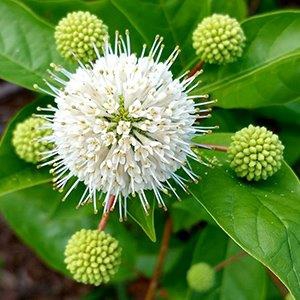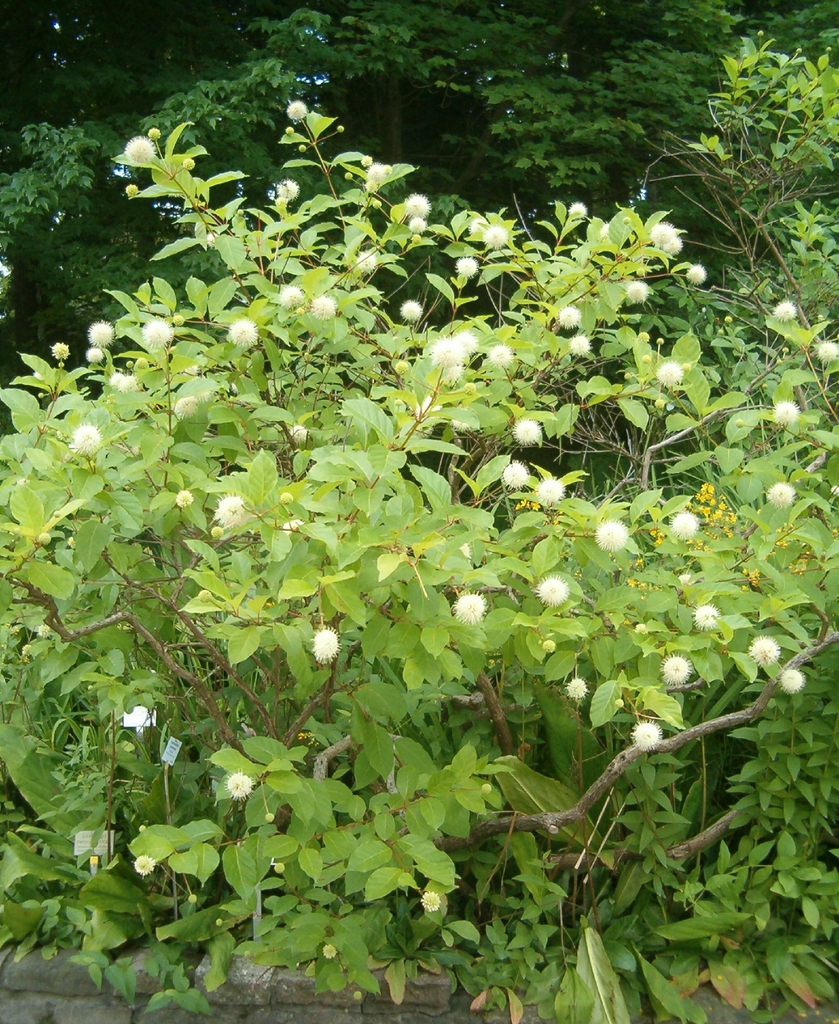Native Plant Highlight – Buttonbush
go.ncsu.edu/readext?816529
en Español / em Português
El inglés es el idioma de control de esta página. En la medida en que haya algún conflicto entre la traducción al inglés y la traducción, el inglés prevalece.
Al hacer clic en el enlace de traducción se activa un servicio de traducción gratuito para convertir la página al español. Al igual que con cualquier traducción por Internet, la conversión no es sensible al contexto y puede que no traduzca el texto en su significado original. NC State Extension no garantiza la exactitud del texto traducido. Por favor, tenga en cuenta que algunas aplicaciones y/o servicios pueden no funcionar como se espera cuando se traducen.
Português
Inglês é o idioma de controle desta página. Na medida que haja algum conflito entre o texto original em Inglês e a tradução, o Inglês prevalece.
Ao clicar no link de tradução, um serviço gratuito de tradução será ativado para converter a página para o Português. Como em qualquer tradução pela internet, a conversão não é sensivel ao contexto e pode não ocorrer a tradução para o significado orginal. O serviço de Extensão da Carolina do Norte (NC State Extension) não garante a exatidão do texto traduzido. Por favor, observe que algumas funções ou serviços podem não funcionar como esperado após a tradução.
English
English is the controlling language of this page. To the extent there is any conflict between the English text and the translation, English controls.
Clicking on the translation link activates a free translation service to convert the page to Spanish. As with any Internet translation, the conversion is not context-sensitive and may not translate the text to its original meaning. NC State Extension does not guarantee the accuracy of the translated text. Please note that some applications and/or services may not function as expected when translated.
Collapse ▲ Buttonbush (Cephalanthus occidentalis) is a deciduous native plant that can be found in all parts of North Carolina. It is usually found as a small shrub up to 12’ tall and 8’ wide, but can grow to 20’ tall. It likes soils that are consistently moist to wet and prefers full to part sun. It is multi-stemmed with a rounded to irregular crown and does not require a lot of pruning.The buttonbush flower appears June to September and when you look closely is reminds you of a pincushion because its round flower cluster has many protruding styles. The fruit is reddish-brown, showy, and persists into winter.
Buttonbush (Cephalanthus occidentalis) is a deciduous native plant that can be found in all parts of North Carolina. It is usually found as a small shrub up to 12’ tall and 8’ wide, but can grow to 20’ tall. It likes soils that are consistently moist to wet and prefers full to part sun. It is multi-stemmed with a rounded to irregular crown and does not require a lot of pruning.The buttonbush flower appears June to September and when you look closely is reminds you of a pincushion because its round flower cluster has many protruding styles. The fruit is reddish-brown, showy, and persists into winter.
 The small white fragrant flowers attract many types of pollinators and the seed attracts birds and mammals. When planted in less than full sun, flowers will not be as abundant. You can use this plant to help control erosion in wet areas. It also works well in a rain or water garden, at the edge of a pond or along a stream, and in areas with poor drainage. Rain gardens experience periodic flooding as well as dry conditions, so once established this plant will tolerant some dry conditions. I had three in my previous garden planted in an area that was not consistently moist, but had a good layer of organic mulch and they performed well for me.
The small white fragrant flowers attract many types of pollinators and the seed attracts birds and mammals. When planted in less than full sun, flowers will not be as abundant. You can use this plant to help control erosion in wet areas. It also works well in a rain or water garden, at the edge of a pond or along a stream, and in areas with poor drainage. Rain gardens experience periodic flooding as well as dry conditions, so once established this plant will tolerant some dry conditions. I had three in my previous garden planted in an area that was not consistently moist, but had a good layer of organic mulch and they performed well for me.
Buttonbush has no major insect or disease problems so would be a great addition to your garden if you have the proper conditions. It has the added benefit of providing food and habitat for pollinators and wildlife which is so important these days. The Extension Master Gardener℠ volunteers of Union County usually have this as one of the small bare-root native plants they offer at their February Plant Sale, so mark your calendars for February 26, 2022. Sign up for the monthly e-newsletter, We Garden Union County, to learn about Plant Sales, Educational Programs, and Community Events, check out the Extension Master Gardener℠ volunteers of Union County website.




